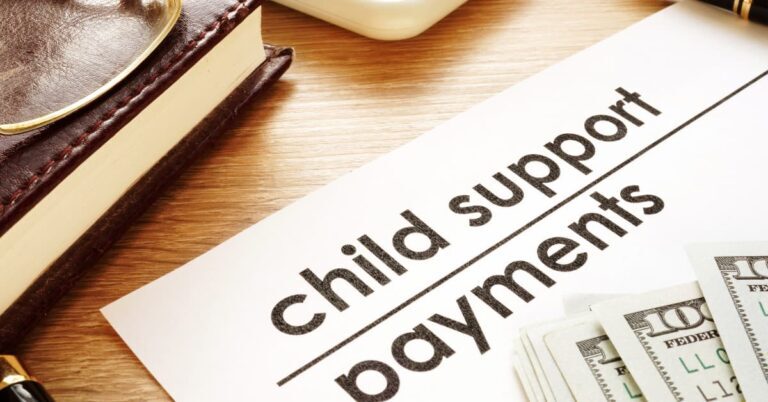A joint application for divorce in Ontario allows both spouses to file for divorce together when they mutually agree to end their marriage. This cooperative process eliminates the need to serve papers, wait for responses, or battle in court, making it faster, cheaper, and less stressful than contested divorce.
Here’s what makes a joint divorce different: both spouses sign the same application, all custody and support issues are already resolved, and you work together instead of against each other. Most joint divorce applications in Ontario are processed within 4-8 weeks, compared to 12-18 months for contested cases.
We’ve helped hundreds of Ontario couples navigate joint divorces at Nussbaum Family Law. The key to success? Making sure your separation agreement is bulletproof and your paperwork is filed correctly the first time.
Key Takeaways
- Joint divorce requires both spouses to agree and file together in Ontario
- You must live apart for 12+ months and resolve all custody/support issues first
- Process takes 4-8 weeks and costs significantly less than contested divorce
- Both parties must live in Ontario for 12+ months to qualify
- A 31-day waiting period applies after the court grants your divorce order
- Legal review ensures your forms are correct and your agreement is enforceable
What Are the Requirements for Joint Divorce in Ontario?
Joint divorce in Ontario has specific legal requirements that both spouses must meet before filing. If you’re still weighing whether separation or divorce is right for your situation, these requirements will help clarify if you’re ready for the joint divorce process.
You qualify for joint divorce if:
- You’ve lived apart for 12+ months – This separation period is mandatory under Ontario law, even if you both want the divorce and get along perfectly
- At least one spouse lives in Ontario – Either you or your spouse must have lived in Ontario for 12 months or more before filing
- You agree on everything – Complete agreement on custody, child support, spousal support, and property division is required
- You’re divorcing due to separation – Joint applications only work for marriage breakdown due to living apart, not adultery or cruelty
- Both spouses can cooperate – You must be willing to complete paperwork together, sign documents, and work through the process as a team
This process works best when there’s genuine cooperation and trust between both parties. If there are power imbalances or hidden disagreements, those issues will surface during the application process.
How to File for Joint Divorce in Ontario
Filing for joint divorce involves several official documents and court procedures, but the process is straightforward when you understand the overall divorce process in Ontario and know what . Most couples complete this process in 4-8 weeks if their paperwork is correct.
Here’s the step-by-step process:
- Complete Form 8A (Joint Application for Divorce) – Both spouses fill out and sign this main application form together
- Gather your marriage certificate – You’ll need a certified copy, not a photocopy or souvenir version
- Prepare your separation agreement – This document must cover all custody, support, and property issues before filing (learn about creating a legally binding separation agreement)
- Fill out Form 36 (Affidavit for Divorce) – This sworn statement confirms the facts in your application
- Complete the Registration of Divorce Proceedings – This registers your case with the court system
- File everything at Ontario Superior Court of Justice – Submit all documents together at your local courthouse
- Pay the court fees – Current filing fees apply unless you qualify for a fee waiver
- Wait for court review – The court examines your documents for completeness and legal compliance
- Receive your Divorce Order – If approved, the court issues your divorce order
- Wait 31 days for finalization – Your divorce becomes legally final after the mandatory waiting period
- Request Certificate of Divorce – Order this official document if you need proof of divorce for future purposes
For detailed information about divorce procedures in Canada, you can review the official government guidelines.
The whole process typically takes 6-10 weeks from filing to final divorce, assuming no complications or missing documents.
Benefits of Joint Divorce in Ontario
Joint divorce has become the preferred choice for many Ontario couples because it addresses the biggest pain points of traditional divorce: time, cost, and conflict.
Joint Divorce Saves Time and Money
When both spouses file together, you eliminate the back-and-forth that drags out contested divorces. There’s no need to serve papers, wait 30 days for a response, or schedule multiple court dates. Most joint applications move through the system in 4-8 weeks instead of 12-18 months.
The cost savings are significant too. You’re looking at one set of court fees instead of two, and legal costs drop dramatically when there’s no fighting involved. We’ve seen couples save thousands by choosing cooperation over conflict.
Avoid Court Battles and Legal Drama
Court battles create stress that affects everyone, especially children. Joint divorce keeps you out of the courtroom entirely, which means no public hearings, no cross-examinations, and no drawn-out legal arguments.
This cooperative approach actually encourages better communication between spouses. When you’re working together toward the same goal, it sets a healthier tone for future interactions.
Keep Your Privacy and Personal Details Protected
Your personal and financial information stays private when you file jointly. There are no public court hearings where sensitive details about your marriage, finances, or family issues become part of the public record.
For many couples, this privacy protection is worth the effort of working together through the divorce process.
Better for Co-Parenting After Divorce
If you have children, joint divorce helps preserve the cooperative relationship you’ll need for effective co-parenting. Starting the divorce process as partners rather than opponents makes it easier to continue working together on parenting decisions after the marriage ends.
Children benefit when parents can communicate respectfully about schedules, school decisions, and important milestones without the baggage of a bitter divorce battle.
Drawbacks of Joint Divorce in Ontario
Joint divorce isn’t the right choice for everyone. Before you commit to this path, you need to understand the potential downsides and whether they apply to your situation.
Both Spouses Must Stay Committed Throughout
Joint divorce requires complete cooperation from start to finish. If one person changes their mind halfway through, the entire process stops. You can’t force someone to participate in a joint application, and any disagreement sends you back to square one.
This means both spouses need to maintain the same level of commitment for the entire 6-10 week process. Even small disputes about paperwork or timing can derail everything.
Risk of Incomplete or Unfair Agreements
When couples rush to file jointly, they sometimes skip important details in their separation agreement. This creates problems later when circumstances change or when one person realizes they agreed to something unfavorable.
We’ve seen cases where people gave up significant rights without fully understanding the long-term implications. Once the divorce is final, it’s much harder to go back and fix these issues.
Potential for Rushed Decisions Without Legal Guidance
The cooperative nature of joint divorce can sometimes mask power imbalances between spouses. One person might feel pressured to agree just to keep things moving smoothly, even if the terms aren’t truly fair.
Without independent legal advice, you might not know what you’re entitled to under Ontario law. The process can feel rushed or confusing, especially when dealing with complex financial or custody arrangements.
Joint divorce works best when there’s genuine mutual respect and full transparency between both parties.
Why Legal Help Still Matters for Joint Divorce
Even when your divorce is amicable and cooperative, legal guidance protects you from costly mistakes that could affect your future. We’ve seen too many couples rush through the paperwork only to discover problems months or years later.
Here’s why professional legal support makes a difference:
- Ensures your forms are completed correctly – Court rejections due to paperwork errors can delay your divorce by weeks or months
- Protects your legal rights – You’ll understand exactly what you’re agreeing to and what you might be giving up under Ontario law
- Reviews your separation agreement thoroughly – A lawyer ensures all important details are covered and legally enforceable, including essential clauses that protect both parties
- Confirms parenting plans meet legal standards – Child custody and support arrangements must comply with Ontario guidelines to be valid
- Prevents common filing mistakes – Small errors in documentation can cause court delays or rejections, which is why understanding typical divorce proceeding errors helps you avoid them
- Provides transparent pricing options – Many couples choose document review services rather than full representation to keep costs manageable, though some consider filing for divorce without a lawyer entirely
Some couples work with one lawyer for document preparation, while others prefer independent legal advice. Either approach helps ensure your joint divorce is done right the first time.
Is Joint Divorce Right for You?
Joint divorce works best for couples who’ve already done the hard work of agreeing on everything. The question isn’t whether you get along perfectly, but whether you can work together toward the same goal.
Signs You’re Ready for Joint Divorce
You’re ready for joint divorce when both spouses accept that the marriage is over and you’ve worked out all the financial details, custody arrangements, and support obligations. Maybe you’ve been separated for months or even years, and now you just want to make it official without the drama.
You can communicate respectfully about practical matters, even if the emotional relationship is over. This means handling paperwork discussions, court requirements, and timeline coordination without major conflicts.
Red Flags That Joint Divorce Won’t Work
If you’re still arguing about money, custody, or who gets what, you’re not ready for this process yet. Joint divorce requires complete agreement before you file, not during the process.
Watch out for situations where one person feels pressured to agree just to keep things moving smoothly. Without genuine mutual consent, the cooperative approach breaks down quickly.
Power imbalances between spouses can also derail joint divorce. If one person dominates financial decisions or the other feels intimidated about speaking up, joint divorce might not be the right choice.
Making the Final Decision
Joint divorce is perfect for couples who prefer cooperation over confrontation and want to move forward with their lives as quickly as possible. If this describes your situation, joint divorce could be the cleanest path forward.
If you’re feeling uncertain about any agreements or pressured to move faster than you’re comfortable with, consider getting independent legal advice before committing to the joint process. You might also want to explore all three ways of getting divorced in Ontario to make sure joint divorce is the right choice for your situation.
What Happens After Your Joint Divorce Is Approved?
Once the Ontario Superior Court approves your joint application, you receive a Divorce Order. But here’s what many people don’t realize: your divorce isn’t legally final yet. There’s a mandatory 31-day waiting period before your divorce becomes official under Canadian law.
After those 31 days pass, either spouse can request a Certificate of Divorce from the courthouse. This document serves as official proof that your marriage has legally ended. You’ll need this certificate if you plan to remarry or need to show proof of divorce for financial, insurance, or legal purposes.
The finalization of your divorce doesn’t eliminate the obligations in your separation agreement. If your agreement includes ongoing child support, spousal support payments, or shared parenting responsibilities, those commitments remain legally binding. Failing to follow through can result in enforcement actions or court intervention.
This is why getting your separation agreement right from the beginning matters so much. The legal and financial responsibilities you agree to will continue long after the divorce paperwork is complete. Professional legal guidance helps ensure you understand exactly what you’re committing to, both now and in the future. Understanding what divorce legal representation costs can help you budget for the right level of support.
Joint Divorce and Emotional Closure
Joint divorce isn’t just a legal process; it’s often an emotional milestone that reflects mutual respect and a shared commitment to moving forward peacefully. Unlike contested divorces that can drag on for months and create lasting bitterness, choosing the cooperative path often provides both parties with dignity and a sense of closure.
When both spouses feel heard and respected throughout the divorce process, it becomes easier to heal and start rebuilding separate lives. This cooperative approach sets a healthier foundation for future interactions, especially when children are involved and you’ll need to maintain a working relationship for years to come.
Still, ending a marriage is emotionally complex, even when both people agree it’s the right decision. Some couples struggle with the finality of signing official documents, while others feel overwhelmed by practical changes like finances, living arrangements, and creating effective parenting plans that work for everyone.
Having experienced legal support during this transition does more than handle paperwork; it provides clarity and reassurance when emotions run high. At Nussbaum Family Law, we understand that every divorce involves real people going through a major life change. We approach each case with both legal precision and genuine empathy, so you can focus on your next chapter while we handle the legal details.
How Nussbaum Family Law Can Help with Your Joint Divorce
Even when your divorce is cooperative and straightforward, professional legal support ensures nothing falls through the cracks. At Nussbaum Family Law, we help Ontario couples complete joint divorces efficiently and affordably, whether you need comprehensive legal representation or just document review.
Here’s how we support your joint divorce process:
- Review and prepare all joint divorce forms – We ensure Form 8A and supporting documents are completed correctly to avoid court delays
- Draft or review your separation agreement – Our lawyers make sure all custody, support, and property terms are legally enforceable and protect your interests
- Confirm parenting arrangements meet Ontario standards – Child custody and support plans must comply with provincial guidelines to be valid
- Provide transparent pricing with flexible service options – Choose from full representation, document review services, or consultation-only support based on your needs and budget
- Minimize risk of court rejections or delays – Proper preparation prevents the common mistakes that can set back your divorce timeline
- Offer clear explanations of your rights and obligations – You’ll understand exactly what you’re agreeing to and what it means for your future
You’ve made the decision to work together through your divorce. Let us help you complete the legal process with confidence, so you can move forward with peace of mind.
Joint Divorce: Your Path to a Peaceful Fresh Start
Joint application for divorce in Ontario offers couples a faster, more affordable path to ending their marriage when both parties can agree on all major issues. The process typically takes 4-8 weeks instead of 12-18 months, costs significantly less than contested divorce, and allows you to maintain privacy and dignity throughout.
The key to successful joint divorce is thorough preparation before you file. Your separation agreement must address all custody, support, and property matters completely, and your paperwork needs to be accurate to avoid court delays. While the cooperative approach saves time and money, it still requires careful attention to legal details that will affect your future.
Most importantly, joint divorce works best when there’s genuine mutual respect and transparency between both spouses. If you can communicate effectively about practical matters and you’ve truly resolved all disagreements, this cooperative path can help you transition to separate lives with minimal conflict and maximum peace of mind.
Ready to Start Your Joint Divorce in Ontario?
A joint divorce can provide the fresh start you both want, but it needs to be handled properly from the beginning. If you and your spouse are ready to move forward together, Nussbaum Family Law is here to ensure your joint divorce is completed correctly, efficiently, and fairly.
Whether you’re in Toronto or anywhere else in Ontario, our experienced divorce lawyers can guide you through every step of the joint application process. We offer flexible service options to match your needs and budget, from comprehensive representation to document review services.
Don’t risk delays or complications by filing incorrectly. Book a consultation today to discuss your joint divorce options and get the legal support that protects your interests while keeping the process moving smoothly.
Frequently Asked Questions About Joint Divorce in Ontario
What is a joint application for divorce in Ontario?
A joint application for divorce in Ontario allows both spouses to file for divorce together when they mutually agree to end their marriage. This cooperative process eliminates the need to serve papers, wait for responses, or battle in court. Both spouses sign the same application, all custody and support issues are already resolved, and you work together instead of against each other.
How long does joint divorce take in Ontario?
Most joint divorce applications in Ontario are processed within 4-8 weeks, compared to 12-18 months for contested cases. After the court approves your application, there’s a mandatory 31-day waiting period before your divorce becomes legally final. The total process typically takes 6-10 weeks from filing to final divorce, assuming no complications or missing documents.
What are the requirements for joint divorce in Ontario?
You qualify for joint divorce if you’ve lived apart for 12+ months, at least one spouse has lived in Ontario for 12+ months, you have complete agreement on custody, child support, spousal support, and property division, you’re divorcing due to separation (not adultery or cruelty), and both spouses can cooperate throughout the paperwork process.
What is a mutual divorce in Ontario?
Mutual divorce in Ontario is another term for joint divorce, where both spouses mutually agree to end their marriage and file together. This cooperative approach requires complete agreement on all issues before filing and allows couples to work together toward the same goal rather than fighting in court.
How much does joint divorce cost compared to contested divorce?
Joint divorce costs significantly less than contested divorce because you’re looking at one set of court fees instead of two, and legal costs drop dramatically when there’s no fighting involved. The cooperative process eliminates expensive court battles, multiple hearings, and extended legal proceedings that can cost thousands more.
Can I file for joint divorce if we have children?
Yes, you can file for joint divorce if you have children, but you must have complete agreement on all custody arrangements, child support, and parenting responsibilities before filing. Your separation agreement must address all parenting issues and comply with Ontario guidelines to be legally valid.










